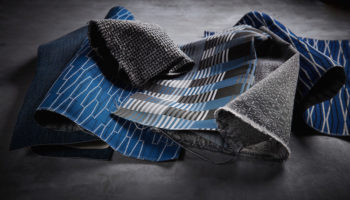Shelter From on High: Olivia Decaris’ Drop Series
Olivia Decaris’ Drop Series is one of those pieces/concepts that makes my metaphorist’s mind run amok. A collection of collapsible/retractable/telescoping tent-like structures designed to lend enclosure to small spaces, the series just concluded a run at London’s Royal College of Art—venue extraordinaire for recent graduates and miscellaneous emerging talents.
Drop Series. Designed by Olivia Decaris.
At the show, Decaris’ invention certainly raised many a bemused brow skyward, as the wooden-ribbed canopies descended from on high to gracefully envelop tables, beds, and desks (and the presumed human occupants seated therewith) in a gentle embrace of pillowy ivory fabric. Decaris characterizes the Drop Series as a “family of sheltering structures based on domestic activities… they aim to bring intimacy, privacy and concentration.” One surmises they do that and more, since they also impart a striking, futuristic—if somewhat bizarre—new aesthetic. Resembling—in no particular order—a space-age yurt, the residential “umbilical cords” from E.T., the close-walled ship’s conduits from 2001, and (my favorite) the interior of the Orgasmatron from Woody Allen’s Sleeper, each piece in the series promises a new brand of seclusion and repose.


At the Royal College show, Decaris presented three incarnations: “working drop” is a single-sized model for desks whose oval shape is ergonomically-conceived to accommodate common working positions; “dining drop” sports a circular shape that “gathers people around the table, transforming the ritual of dining into a more intimate moment”; and “sleeping drop”—a philosophical compatriot of the Egg Bed—takes the shape of a standard mattress, thereby creating a sound and sight-proof cocoon to aid in slumber and rejuvenation.
While I’ll certainly concede that these pieces won’t work for every application or individual (paranoiac claustrophobics will likely react poorly, since they may confirm the ubiquitous suspicion that the very walls are closing in), they shine as a quick and simple response to on-demand miniature rooms. In addition to the obvious residential applications, Decaris envisions their use in restaurants and libraries, where they’ll not only provide a seamless temporary shelter, but also create the illusion that you’re all by your lonesome, which is—at one time or another—what everybody needs (via Dezeen).




Leave a Reply